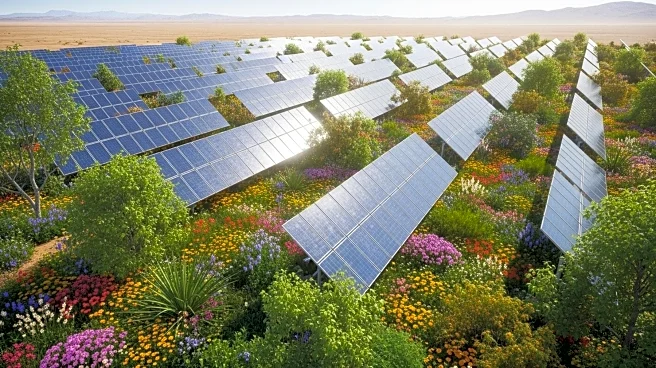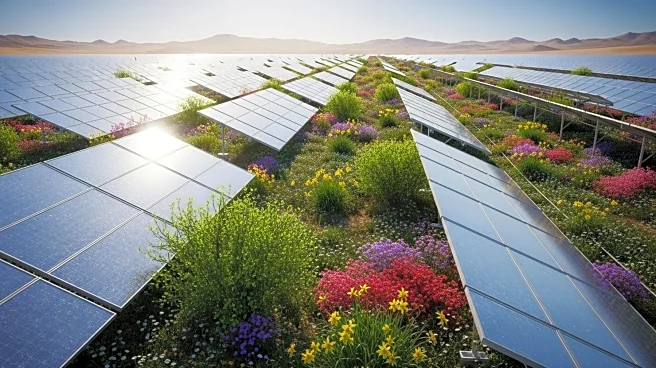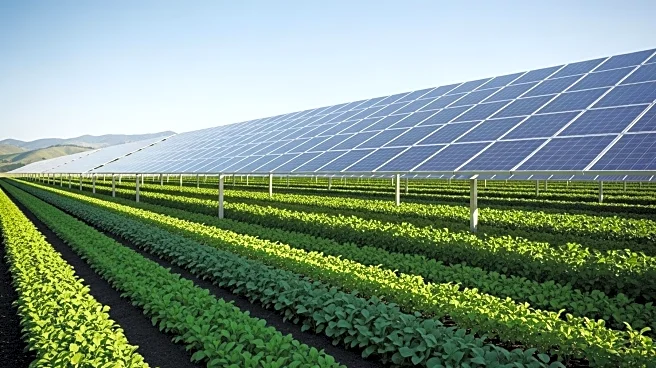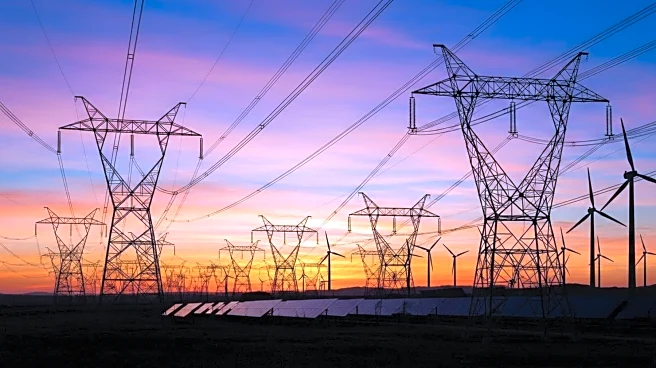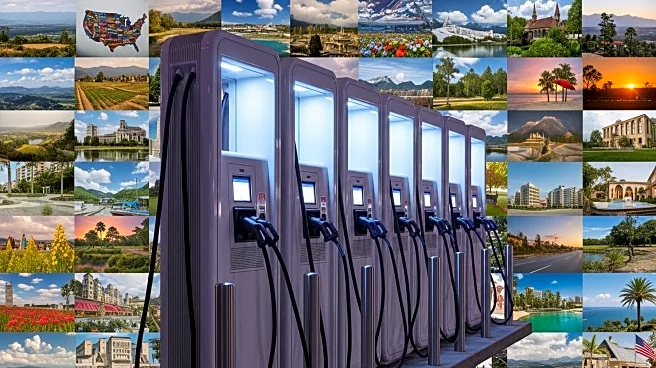What's Happening?
Recent research conducted by Chinese scientists has revealed that solar panels installed in desert areas can have significant ecological benefits. The study focused on the Gonghe Photovoltaic Park in Qinghai Province, where large-scale photovoltaic (PV) development has led to noticeable ecological changes. The research found that the shade provided by solar panels reduces surface radiation and evaporation, creating cooler and damper conditions that allow vegetation to thrive and microbial communities to rebound. This has resulted in a surprising ecological revival in the Talatan Desert, which was previously considered inhospitable. The study utilized the DPSIR framework to track various factors such as humidity, temperature, soil nutrients, and local flora, demonstrating that areas directly beneath the solar arrays scored higher on ecological indices compared to transitional and off-site desert zones.
Why It's Important?
The findings from this study highlight the potential for solar farms to serve dual purposes: generating clean energy and aiding in environmental restoration. This could have significant implications for desert regions worldwide, including those in the United States, where similar ecological benefits might be realized. The ability of solar panels to create microclimates conducive to biodiversity could transform how renewable energy projects are perceived and implemented, offering a sustainable solution to desertification. This research challenges the traditional view of deserts as barren landscapes and suggests that with careful siting and management, solar farms could become vital tools in combating climate change and promoting ecological health.
What's Next?
While the initial results are promising, the researchers emphasize the need for long-term monitoring to fully understand the impact of solar panels on desert ecosystems. The study suggests that local design and site selection are crucial, as the ecological benefits observed in Qinghai may not directly translate to other desert regions, such as the Sahara or the American Southwest. Future research and pilot projects could explore the adaptability of these findings to different environments, potentially leading to new strategies for integrating renewable energy with environmental conservation efforts.
Beyond the Headlines
This research prompts a reevaluation of the role of solar energy in environmental restoration. It suggests that solar farms could be designed not only to produce electricity but also to support native plant growth, improve soil quality, and foster wildlife habitats. This approach could redefine the relationship between renewable energy and ecological preservation, offering a model for sustainable development that balances energy needs with environmental stewardship.
